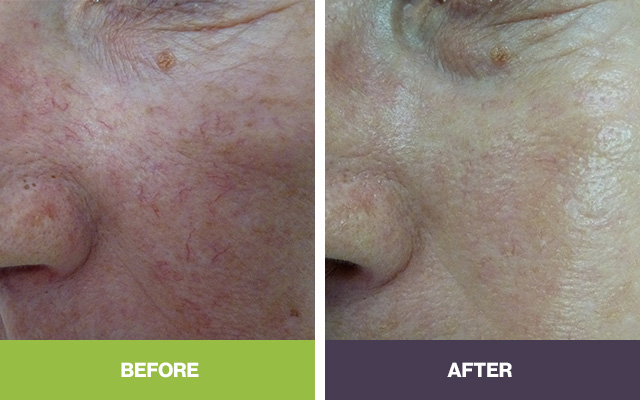Telangiectasia, Spider Naevi, Spider Veins and Broken Capillaries

Naevi and broken capillaries represent dilated surface blood vessels, otherwise known as telangiectasia which are dilated surface blood vessels. Telangiectasia are usually seen on the face (nose, cheeks and chin) and on the legs, particularly the lower part of the leg. Telangiectasia are usually benign but are for some unsightly and distressing. Telangiectasia generally respond well to laser treatment.
Cherry angiomas
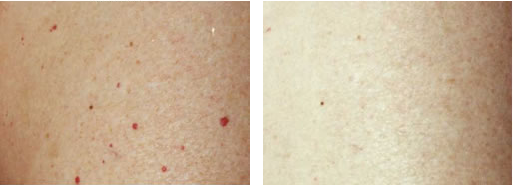
Cherry angiomas are very common small cherry-red lumps usually the size of a pin head which may grow slowly to the size of a match head. In contrast to pyogenic glanulomas they rarely cause discomfort and only require treatment for cosmetic reasons. They respond well to laser treatment.
Rosacea
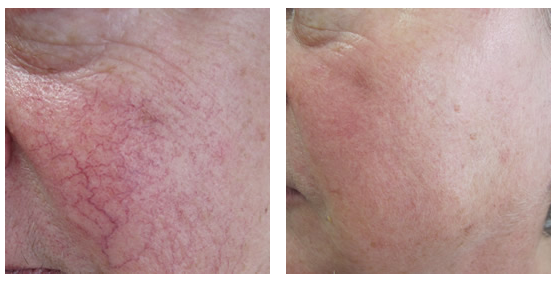
Rosacea is a common disorder, causing a red facial rash affecting the cheeks and nose mostly, but also often the chin and lower forehead area.
The cause of rosacea is unknown. It may develop at any age, in either sex but most often begins in women between 30 and 50 years of age. In men, rosacea tends to begin earlier and to be more severe.
Factors which cause flushing in normal people may aggravate rosacea and make it more apparent but there is no evidence that these factors are involved in causing the disorder.
The facial redness is caused by a combination of prominent blood vessels (telangiectasia) and background redness (erythema). In many cases there is also an eruption of acne-like lumps within the area of facial redness.
Rosacea can be treated successfully or greatly improved by Laser and IPL (Intense Pulsed Light) treatments, often in association with oral or topical treatments.
Port wine stains
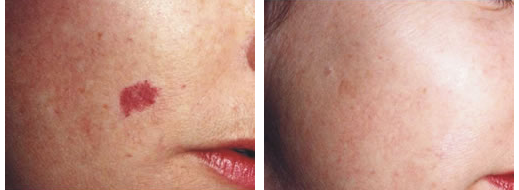
Port wine stains are vascular birthmarks due to patches of capillary vascular malformations. Some may fade over time but most remain unchanged.
Most port wine stains can be improved and sometimes removed by laser treatment, although numerous treatments are usually required.
Pyogenic granulomas
Pyogenic granulomas, also referred to as a granuloma telangiectaticum, are small vascular malformations. Pyognic granulomas appear as cherry-red, shiny lumps which may grow very rapidly from the size of a pin-head size to that of a small pea. Pyogenic granulomas, usually form on the trunk, arms or legs and can cause discomfort and bleeding. They respond well to laser treatment, but caution needs to be exercised to eliminate other conditions, especially skin cancers. Quite often the lesion needs to be biopsied or excised for histology testing to be sure it is benign.
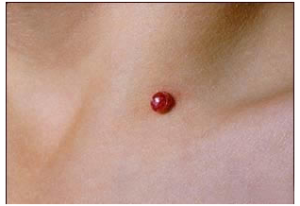
Vascular Lesions Adelaide
